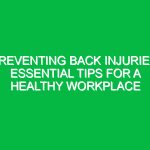Welcome team,
Today, we are going to discuss a crucial topic that directly impacts our health, safety, and environment – preventing backing up hazards. Understanding and addressing these hazards is essential for maintaining a safe work environment and preventing accidents. Let’s dive into the details to ensure we are all equipped with the knowledge and practices to mitigate these risks effectively.
The Importance of Addressing Backing Up Hazards
Backing up hazards refer to the risks associated with reversing vehicles or machinery in the workplace. These hazards pose a significant threat to the safety of employees, as they can result in collisions, injuries, or even fatalities if not managed properly. By understanding and implementing preventive measures, we can reduce the likelihood of accidents and create a safer workspace for everyone.
Identifying Backing Up Hazards
It’s essential to recognize the common signs of backing up hazards in our work environment. These may include limited visibility, congested areas, lack of designated pathways for vehicles, or inadequate communication between operators and pedestrians. By being aware of these indicators, we can proactively address potential risks and prevent accidents from occurring.
Best Practices for Preventing Backing Up Hazards
Here are some essential tips to help us mitigate backing up hazards effectively:
- Use Spotters: Assign trained spotters to assist vehicle operators in navigating tight spaces or congested areas.
- Install Backup Alarms: Equip vehicles with audible alarms to alert pedestrians and other workers of reversing movements.
- Establish Clear Communication: Ensure clear communication protocols between operators, spotters, and pedestrians to avoid misunderstandings.
- Implement Visibility Aids: Use mirrors, cameras, or other visibility aids to enhance the operator’s view while reversing.
- Designate Safe Zones: Create designated pathways and safe zones for pedestrians to minimize interactions with moving vehicles.
Real-Life Scenario
Imagine a scenario where a forklift operator is backing up to load pallets in a warehouse. Without a spotter to guide them, the operator fails to see a pedestrian walking behind the forklift, resulting in a near-miss accident. This highlights the importance of having proper protocols in place to prevent such incidents.
Regulations and Compliance
It’s important to adhere to relevant regulations, standards, and company policies related to backing up hazards. Compliance not only ensures our safety but also fulfills legal obligations to maintain a secure work environment for everyone.
Conclusion
As we conclude this toolbox talk, remember that each one of us plays a crucial role in preventing backing up hazards and promoting safety in the workplace. By following the best practices discussed today and staying vigilant, we can create a work environment free from accidents and injuries. Thank you for your attention and commitment to safety.
Stay safe, everyone!


